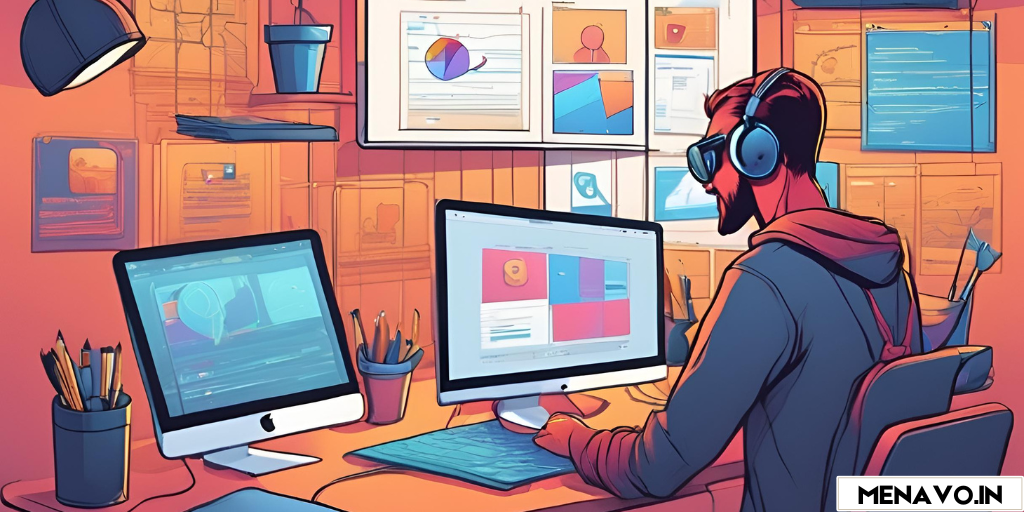Web development is the art and science of building websites and web applications. Whether you’re looking to create a personal blog, an online store, or a portfolio, understanding the basics of web development is essential. This guide will walk you through the fundamental concepts and tools you need to get started.

1. Understanding Web Development
Web development can be divided into two main categories:
- Frontend Development: This involves everything the user interacts with directly on a website, like buttons, images, text, and overall layout. It’s the “face” of the website.
- Backend Development: This involves the server, database, and application logic. It’s like the “brain” of the website, making sure everything works behind the scenes.
2. Key Languages and Tools?
To start building websites, you need to be familiar with a few essential languages and tools:
HTML (HyperText Markup Language): The foundation of any website, HTML structures the content on the page. Think of it as the skeleton of your website.
- Example:
<h1>Welcome to My Website</h1>
- Example:
CSS (Cascading Style Sheets): CSS is used to style the HTML structure. It controls the colors, fonts, spacing, and layout of your website.
- Example:
h1 { color: blue; font-size: 24px; }
- Example:
JavaScript: A scripting language that adds interactivity to your website. With JavaScript, you can create dynamic content, such as slideshows, forms, and games.
- Example:
document.querySelector('button').addEventListener('click', function() { alert('Button clicked!'); });
- Example:
Text Editor: A tool where you write your code. Popular choices include Visual Studio Code, Sublime Text, and Atom.
3. Frontend Development: Bringing Your Website to Life?
Frontend development is all about making the website look good and ensuring it works smoothly for users. Here’s how to start:
- Structure with HTML: Begin by writing the basic structure of your website using HTML. This includes headings, paragraphs, links, images, and other elements.
- Style with CSS: Once your structure is in place, use CSS to make your website visually appealing. Choose colors, fonts, and layouts that align with your design vision.
- Add Interactivity with JavaScript: Finally, add JavaScript to create interactive features, such as dropdown menus, image sliders, or contact forms.
4. Backend Development: Powering Your Website?
Backend development handles the data and functionality of your website. It usually involves:
- Server: A computer that hosts your website and serves it to users when they visit your site.
- Database: A system that stores your website’s data, such as user information, blog posts, or product details.
- Server-Side Languages: Languages like PHP, Python, or Node.js are used to write the backend logic that processes requests and manages the database.
5. Bringing It All Together?
Once you have your frontend and backend developed, you’ll need to:
- Test Your Website: Ensure everything works as expected across different browsers and devices.
- Deploy Your Website: Make your website live by uploading it to a web server. Services like GitHub Pages, Netlify, and Heroku can help you with deployment.
- Maintain and Update: Websites require ongoing maintenance. You may need to update content, fix bugs, or add new features over time.
6. Getting Started: Practice Makes Perfect?
The best way to learn web development is by doing. Start with small projects like building a personal homepage or a simple blog. As you gain confidence, you can take on more complex projects.
Conclusion
Basics Web development is a vast and exciting field that offers endless possibilities. By mastering the basics of HTML, CSS, and JavaScript, and understanding how frontend and backend development work together, you’ll be well on your way to creating your own websites and applications. Happy coding!